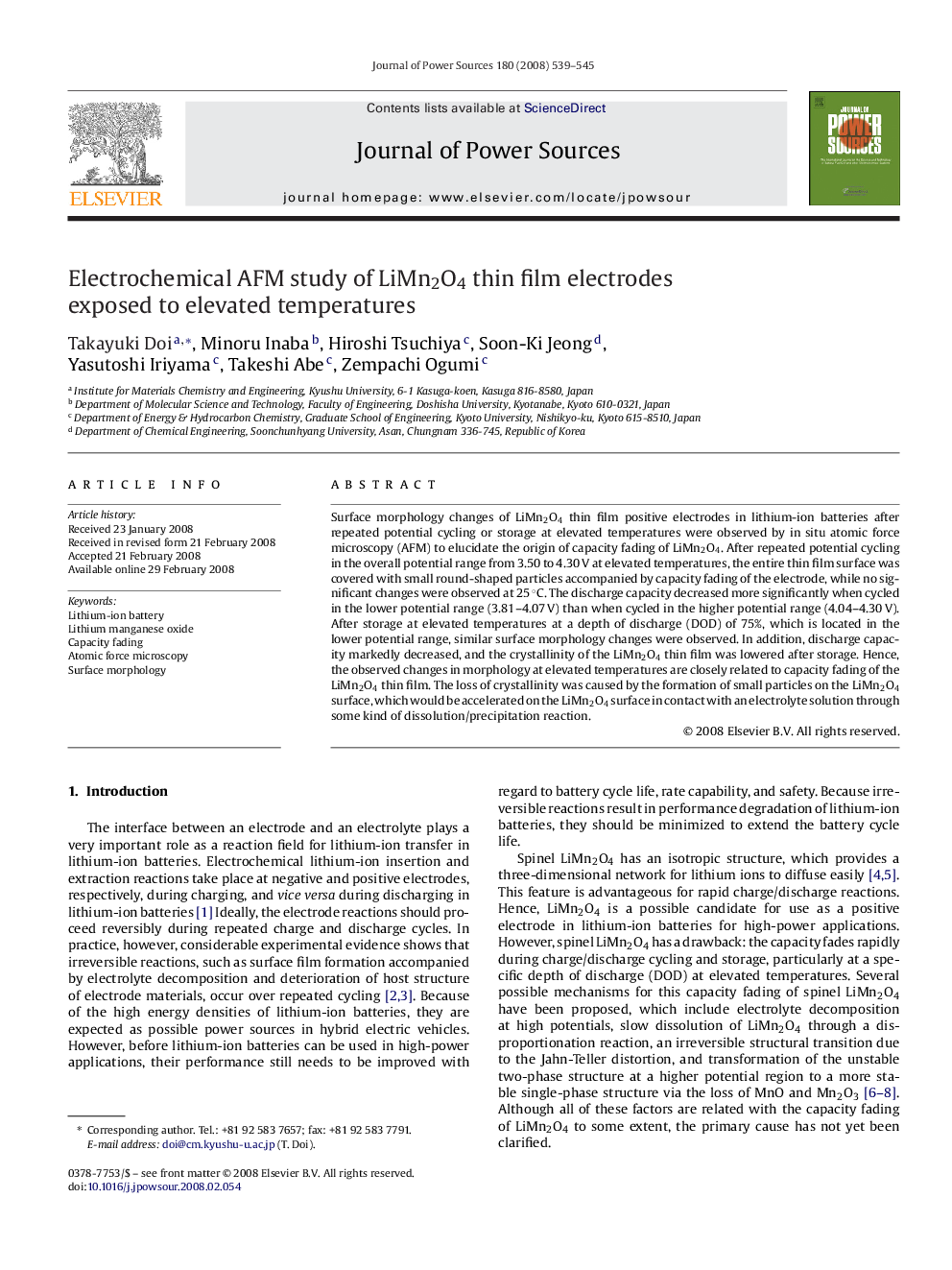| Article ID | Journal | Published Year | Pages | File Type |
|---|---|---|---|---|
| 1290603 | Journal of Power Sources | 2008 | 7 Pages |
Surface morphology changes of LiMn2O4 thin film positive electrodes in lithium-ion batteries after repeated potential cycling or storage at elevated temperatures were observed by in situ atomic force microscopy (AFM) to elucidate the origin of capacity fading of LiMn2O4. After repeated potential cycling in the overall potential range from 3.50 to 4.30 V at elevated temperatures, the entire thin film surface was covered with small round-shaped particles accompanied by capacity fading of the electrode, while no significant changes were observed at 25 °C. The discharge capacity decreased more significantly when cycled in the lower potential range (3.81–4.07 V) than when cycled in the higher potential range (4.04–4.30 V). After storage at elevated temperatures at a depth of discharge (DOD) of 75%, which is located in the lower potential range, similar surface morphology changes were observed. In addition, discharge capacity markedly decreased, and the crystallinity of the LiMn2O4 thin film was lowered after storage. Hence, the observed changes in morphology at elevated temperatures are closely related to capacity fading of the LiMn2O4 thin film. The loss of crystallinity was caused by the formation of small particles on the LiMn2O4 surface, which would be accelerated on the LiMn2O4 surface in contact with an electrolyte solution through some kind of dissolution/precipitation reaction.
